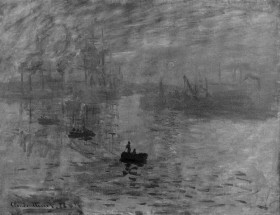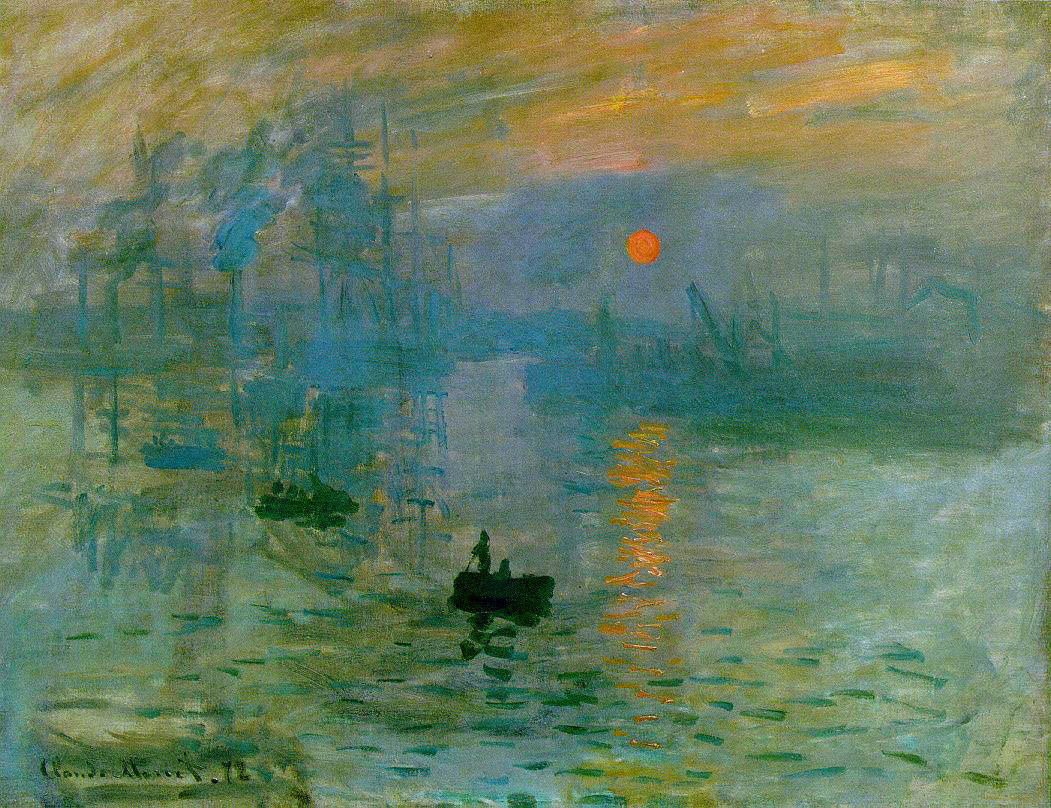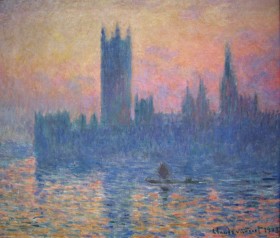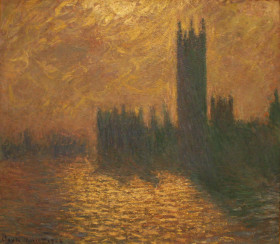 Claude Monet (self-portrait on the right) is very popular name in the impressionist artists as his painting ‘Impression, Sunrise’ was the cue card for the term impressionism and the new style, in which there were no boundaries of the real world. In a sense he was painting things in a way in which the human see the world, not the painting about what the actual things are out there. Establishing this new style may have given him some setbacks but ultimately the new style became the reward of his life-long treasure-hunt for besting his own art.
Claude Monet (self-portrait on the right) is very popular name in the impressionist artists as his painting ‘Impression, Sunrise’ was the cue card for the term impressionism and the new style, in which there were no boundaries of the real world. In a sense he was painting things in a way in which the human see the world, not the painting about what the actual things are out there. Establishing this new style may have given him some setbacks but ultimately the new style became the reward of his life-long treasure-hunt for besting his own art.
Some revolutions take time to be understood and accepted by people, but when they do they get phenomenon. The same happened with Monet’s new style of impressionism. But before that, let’s have quick look at the artist’s own history.
Affection towards painting at early age
Born on 14th November, 1840 in Paris, Monet was a second son of a grocer father and a singer mother. He was baptized at the local church but contrarily he became an atheist in later life.
His fascination towards painting was expressed at the early age. He was known in the locals for his charcoal Caricatures, which he sold for 10 to 20 francs. His interest in paintings made him to learn his first drawing lessons from Jacques-Francois Ochard. He learned how to use oil paints from a fellow painter Eugene Boudin who gave him a technic ‘En plein air’ (outdoor).
Sadly, his mother died in 1857. He left school and went to live with his widowed aunt, Marie-Jeanne Lecarde.
Further Studies and first recognitions through art
He visited Louvre, the monumental museum of Paris, after a while where he saw other artists copying the great works presented there. But, Monet found it an inappropriate way to learn the art. Instead he would go to nearby window and just start to draw whatever he finds interesting or just the natural scenery. This more near-nature approach and insistence to draw the original work instead of copying someone helped him in his later works where he majorly drew the natural landscapes and the beautiful sceneries lying around him.
In Paris, he met Edouard Manet who became a fellow impressionist later on. During this time, he also joined the First Regiment of African Light Cavalry in Algeria. It was a seven years’ commitment but due to typhoid and his aunt’s insistence he had to leave the army. Then, he studied under a scholar Swiss painter Charles Gleyre. While being under his guidance, he met three acquaintances (Pierre-Auguste Renoir, Fredric Bazille and Alfred Sisley) with whom he extended his style of small brush strokes, effects of light en plein air with broken color and rapid brushstrokes. This style became famous as the style of expressionism later on.
His two works Camille and The woman in the green dress bought the initial recognition among the public. The model of those paintings became his wife (in 1870) and served as model for many other including Women in the Garden (shown above) and On the Bank of Seine.
Suicide Attempt
Though, in 1868 his popularity through his new paintings was rising, his financial condition was so poor that once he tried to kill himself by jumping into the river Seine. In today’s term it was Clinical Depression in which a person loses all hopes to live and finds no pleasure in everyday activity. But he was saved and after getting a modest financial support from Frederic Bazille Monet survived the first attack of the depression. It is very sad for our society to see a prolific artist trying to kill himself just because of financial problems.
Debut of the word ‘Impressionism’
The word impressionism was firstly coined by an art-critic Louis Leroy when he saw Monet’s painting ‘Impression, Sunrise’ (shown below).
He wrote an article about the painting titled The exhibition of the impressionists, unknowingly coining the term Impressionism. His words for the art-work were:
“Impression I was certain of it. I was just telling myself that, since I was impressed, there had to be some impression in it — and what freedom, what ease of workmanship! A preliminary drawing for a wallpaper pattern is more finished than this seascape.”
After the first use in the article and Monet’s more works with the same theme, gradually, spread the term in general public. The artists who like Monet’s style started to call them impressionist. Thus, a new movement of impressionism was started weighing similar to Pablo Picasso’s Cubism movement.
 There is an interesting fast-fact to know about the painting. Which part of the paintings is the brightest? Apparently, it is the sun. But, the catch is, the sun and the sky has the same brightness. According to Dr. Margaret Livingstone, if we convert the painting in black-and-white (a way to figure out the luminance of any image) the sun almost disappears. See if you can find the sun at the first glance in the B&W version of the paining on right.
There is an interesting fast-fact to know about the painting. Which part of the paintings is the brightest? Apparently, it is the sun. But, the catch is, the sun and the sky has the same brightness. According to Dr. Margaret Livingstone, if we convert the painting in black-and-white (a way to figure out the luminance of any image) the sun almost disappears. See if you can find the sun at the first glance in the B&W version of the paining on right.
Popular Painting series
After 1890s Monet started to paint in series. He would pick any one subject or the scene and draw many different versions of the same setting or the subject. Painting in series is not a new practice as it was used from the times of the “Old Masters“.
Monet’s popular paintings series are Rouen Cathedral, London Parliament, Water Lilies, haystacks and Poplars. If you look at those series, maybe you would find it easy at first that drawing same settings again and again. But the fact is it is very difficult represent the same scene entirely in different mood. Here is the example from the series London Parliament:
His most popular painting after the impression, sunrise was the series Water lilies. There was a pond beside their house full of water lilies. He drew more than 250 version of the scene during the time of 1897 to the year of his death, 1926. Recently one painting of the series was sold for $ 43 million in an auction.
Another notable series by him was the ‘Weeping Willow’ which was a tribute the fallen French soldiers of the First World War.
Currently, Claude Monet is a respectful name in the art community. And his life tells us only one thing. You never know which of your work would catch the public’s eyes. So, instead of giving up, just try and try harder to furnish your passion. People will automatically love your work one day!




